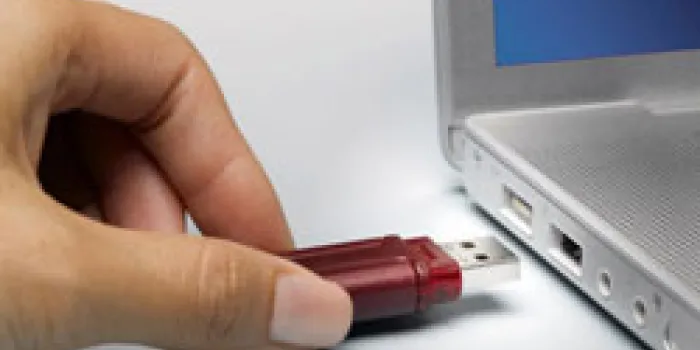When Michael Schultz was 10 years old, his parents put him in charge of self-infusions to manage his moderate hemophilia A. They also gave him a pen and paper and asked him to record when he gave himself a treatment and what type of bleed he was treating.
“It was important for me to keep this information,” Schultz says. This record of his bleeds seemed potentially helpful to the doctors and nurses at his hemophilia treatment center (HTC), but they never seemed to have time to fully examine the stacks of papers.
Now a 23-year-old college senior at Western Kentucky University in Bowling Green, Kentucky, Schultz is combining his experience with hemophilia with his interest in technology to help people with bleeding disorders create more user-friendly recordkeeping systems. He’s designing an application to use on the iPod Touch (portable media player and personal digital assistant), iPhone (smartphone), the new iPad (tablet computer) and the Web that will let people log their factor infusions and keep track of other important treatment details.
Schultz joins the growing number of people recognizing the need for health information logs. Bleeding disorders experts and organizations are developing other products to help people coordinate and share their health history—and they’re sending the message that keeping good medical records isn’t only your treatment center’s responsibility. Maintaining up-to-date records can help you better manage your or your child’s bleeding disorder and may even be life-saving, experts say.
Tracking Day-to-Day Changes

As Schultz’s parents taught him years ago, an important component of your personal health record is a daily account of your bleeds and treatments. Staff at Hemophilia of Georgia in Atlanta offer patients a downloadable calendar through the center’s Web site for tracking the amount of factor they take, whether they were treating a bleed or infusing for prevention and other important information, says Penny Kumpf, RN, an outreach nurse at the center.
“If we see these calendars come back to the hemophilia treatment centers, we know patients are doing what they’re supposed to be doing,” Kumpf says. “When you maintain your own records, you're being a more active participant in your own healthcare.”
With this information in hand, you can help your healthcare providers tailor your treatments to your individual needs, says Jocelyn Gorlin, RN, CPNP, a nurse practitioner specializing in hemophilia at the Children’s Hospitals and Clinics of Minnesota in Minneapolis.
Over the years many parents have told Gorlin, “I don't know how many bleeds my child has had.” “But if someone can say to me, ‘My child had four right knee bleeds and two left knee bleeds,’ then I can say, ‘Maybe we’re not using enough factor, or maybe you need an orthotic for the shoes.’”
Keeping such records gets children with hemophilia involved in their care, Gorlin adds. As your child gets older, giving him more responsibility for recording his bleeds and factor infusions will teach him crucial lessons. He will be able to differentiate between a minor and major bleed, for instance and will have the tools he needs to manage his own care later in life. (See sidebar, “Hemophilia Records Go High-Tech.”)
Ready for Anything
The other important element in your personal health file is the history of your disease from your healthcare providers’ perspective. It’s a good idea to maintain not only a comprehensive record of your test results, diagnoses and medications, but also a quick-hit summary of the important points, says Diane Aschman, MS, president and CEO of the American Thrombosis and Hemostasis Network (ATHN) in Riverwoods, Illinois. ATHN’s mission is to be the steward of a secure national database to support research and other efforts that could help people with hemophilia and other disorders.
After each trip to a healthcare provider’s office, you can ask for a copy of the notes from that visit to add to your own records, Gorlin suggests. However, keep in mind that the office may charge a fee.
More important, keeping a brief overview of your medical needs can save you a lot of hassle and heartache. This could be a one- or two-page write-up with bullet points that summarize the condition and treatment needs, Aschman says. If your child is going to his grandparents’ house for the weekend, you can print a copy to send with him in case he gets hurt and needs medical treatment. This document is also handy if you’re headed to a dentist or physician who doesn’t specialize in hemophilia.
If you wind up in the emergency room, this information can also help ensure that you or your child gets critical care and gets it faster. If ER providers are unaware of your condition, they could inadvertently order invasive procedures or spend time running imaging scans of your body instead of first treating you with factor to stop any internal bleeding, Aschman says.
[Steps for Living: When To Go To the Emergency Room]
You can keep a paper version of this document or store it on a flash drive, a computer storage device that can fit into your purse or pocket. When ATHN met with focus groups in 2009, many of the participants believed flash drives were the best way to make their personal health records available but confidential, Aschman says. Compared with posting the information on a Web site, a flash drive keeps personal information in the patient’s hands away from prying eyes. Conversely, if you lose the flash drive, you run the risk of other people accessing your health information. If you opt for the flash drive, make a concerted effort to protect it.
However you choose to carry this document, it should include:
- Your specific type of bleeding disorder and any other important diagnoses such as HIV, hepatitis C or a current or previous inhibitor
- What you take to treat bleeds and the dosages you use for different severity of bleeds
- If you’re on prophylaxis, the type of replacement factor, dosage and when and how often you take it
- Any other medications you’re taking and any drug allergies
- Warnings and guidance regarding the care you need
Ideally, your healthcare provider should create your personal health record, not you. During ATHN-sponsored research, emergency medical providers reported they felt more comfortable veering from their usual methods if the information comes from a doctor with a background in bleeding disorders or an HTC, rather than the patient.
“Most practitioners, in the face of an emergency, will accept any and all input they can get,” Aschman says. “Having something well-structured, well-summarized and well-credentialed is much more valuable and will save a lot more time than having handwritten information from the patient.”
ATHN is implementing a computerized system that protects an electronic version of patients’ records for the nation’s HTC network. The program has been tested in several centers and should roll out to the rest of the HTCs in 2010. Once the system is in place, your HTC will be able to easily produce this document for you, Aschman says. Centers will be able to download your crucial information onto a well-marked, credit card-shaped flash drive for you to carry. However, if you get your care from a provider not affiliated with ATHN, you can still ask the office to provide you with this kind of information.
When Seconds Count
Even if you keep great records of your bleeding condition, in an emergency this information may not be helpful if it doesn’t reach the right people.
Gorlin noticed long ago that the young patients she saw typically didn’t wear emergency medical identification, such as MedicAlert®. This type of identification, often worn as a necklace or bracelet, alerts paramedics and emergency-room staff that the wearer has a bleeding disorder.
Gorlin recently surveyed a nationwide sample of nurses involved in hemophilia care to assess how often they thought children with bleeding disorders actually wear emergency medical identification. Their answer: Rarely. Most nurses said safety was the main issue for infants, as parents may worry that their child could choke on the bracelet or be injured by the necklace. Cost and difficulty getting them to fit correctly were also issues. And older kids may not like the identification because they don’t want to look different.
However, Gorlin found out that many parents were stashing medical information in their wallets, purses, glove compartments or the child’s car seat. “Parents feel that if there’s an accident, they would be with the child. But if there’s an accident, the parents might be injured or unable to speak,” Gorlin says.
Gorlin also learned from discussions with emergency medical providers that they usually only look for medical identification on the patients themselves—not in their surroundings. Having a description of your or your child’s bleeding disorder in your purse or wallet is a great idea, she says, but it’s no substitute for an easier-to-find alert on a necklace or bracelet.
Even if your child or teen objects, this information is too important to not display prominently, Gorlin says. If you have an infant, have him wear a wrist band (or ankle band), she urges, and he’ll grow up understanding the importance of keeping this information handy. Gorlin is working with the National Hemophilia Foundation (NHF) to identify appropriate emergency medical identification for infants and to develop guidelines for the use of this type of identification in youths with hemophilia.
Experts agree that having crucial information on hand can provide the key to better health. “This can reduce complications, reduce mortality and certainly reduce the cost of delivering care,” Aschman says. “Personal health records help to empower individuals to be their own advocate for their health in various situations they have to confront.”

